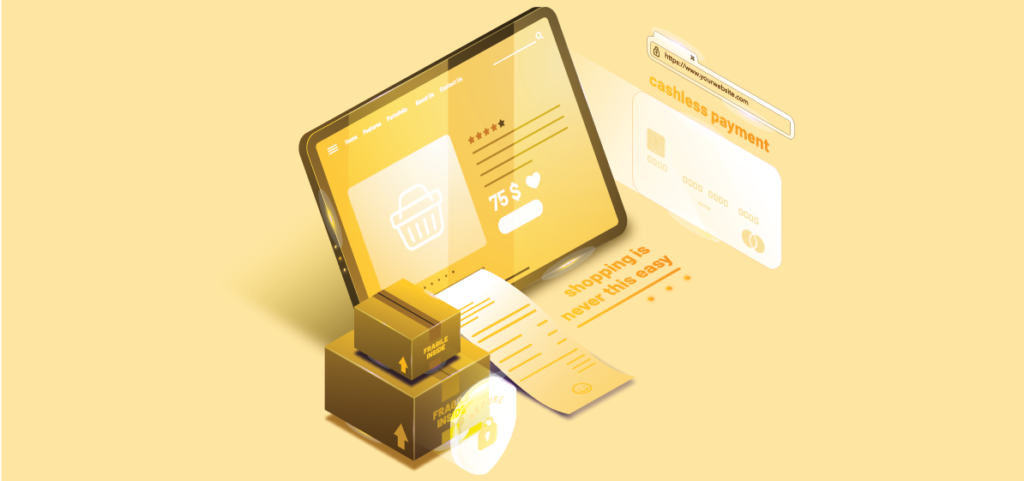
Top eCommerce Trends to Look Out for in 2022 and Beyond
When it comes to eCommerce, change is the only constant. It’s an innovative industry where business owners adopt new technologies every day to stand out from competitors.
This was further boosted by the pandemic when people were forced to stay in their homes. In 2020, over 2 billion people purchased goods online. Moreover, worldwide e-retail sales surpassed $4.2 trillion in the same year. Global retail grew by as much as 25% during the year of the pandemic.
All this buzz around eCommerce has encouraged retailers to step up their game to offer customers better shopping experiences. This involves adopting the latest eCommerce trends to stay ahead of the curve.
In this article, we’ll discuss a few top eCommerce trends to look out for in 2022 and beyond.
Trend 1 - AR/VR to be the game-changer for eCommerce

Roughly 70% of all online shoppers abandon their carts before making a purchase. This means 7 in 10 shoppers don’t complete a transaction, suggesting that online retailers need to do a lot more to persuade customers to go ahead with their purchases.
Emerging technologies like augmented reality (AR) and virtual reality (VR) have the potential to positively affect eCommerce. Ever since the ‘Metaverse‘ buzz started last year, AR and VR have been trending because these are the foundational technologies upon which metaverse is built.
AR/VR allows shoppers to truly see and experience the items they are purchasing. Especially in industries like fashion and home decor, AR/VR has been gaining wide popularity.
Some promising use cases of AR/VR include –
- Building innovative and immersive marketing campaigns to capture customer attention
- Build awareness by offering an opportunity to virtually experience the benefits of the product
- Virtual showrooms to allow customers easily explore products from their homes
- Cutting down costs for customers by allowing them to try products before purchasing
- Fewer product returns and complaints since customers can experience beforehand how the product will work for them.
In 2022 and beyond, we are AR/VR is going to a key trend that will reshape eCommerce.
Trend 2 - The demise of third-party cookies to force brands to rethink personalization
Personalization has worked a great deal for retailers over the past decade. However, with the death of third-party cookies, brands will now need to rethink personalization.
In 2022 and beyond, internet users will exercise their privacy rights more and more. The governments will only make it easier for them to do so. In 2021, China enacted the Personal Information Protection Law. Similarly, Brazil also began issuing penalties to violators of the country’s General Data Protection Law. Then there is California’s Consumer Privacy Act as well as the EU’s General Data Protection Regulation (GDPR) which has been active since 2018. More countries and states around the globe will start enacting such data privacy laws, making it difficult for marketers to offer personalization.
Moreover, recently we are seeing the rise of a slew of browsers (like Brave, Firefox, Safari) that automatically block third-party cookies.
In order to fill this void, brands will start turning to first-party data (collected directly from customers). In 2022, as many as 42% of brands plan to use tools like quizzes, custom mobile apps, and first-party or third-party behavioral data to offer their customers personalized product recommendations.
Another way brands will look to implement personalization will be through community building. Brands that focus on building communities will be able to leverage customer loyalty to get user data. Strengthening customer relationships is the way forward.
Trend 3 - Buy Now Pay Later (BNPL) model to gain further popularity in the eCommerce sector

The Buy Now Pay Later (BNPL) isn’t a new model but it became massively popular during the pandemic when customers were looking for ways to offset payments. BNPL became especially popular among young shoppers.
BNPL is simply a payment model that allows customers to pay for products they purchase in regular installments instead of paying the entire amount upfront. It’s preferred over credit card payments because BNPL transactions are interest-free.
A key trend that we may see in 2022 and beyond would be the higher adoption of BNPL in eCommerce. Online retailers are increasingly looking at adopting BNPL because it reduces cart abandonment rates, increases average order size, boosts sales, and accelerates the checkout process.
Trend 4 - Rising acquisition costs to force brands to focus on building long-term relationships with their customers
It’s easier than ever to sell online because of the advancement in technology as well as the availability of online marketplaces. Thanks to this low entry barrier, there has been an influx of D2C brands that are directly competing with eCommerce stores for customer attention. With so many businesses online, it’s getting harder for brands to be found by customers.
Moreover, paid ads are more expensive than ever. Digital advertising costs are skyrocketing across platforms, eating up the majority of marketing budgets.
Then there are data regulations by brands like Apple, making it more difficult to track results in ad spending. All this leads to a rise in acquisition costs. In other words, online merchants are spending more and gaining less. Some brands are seeing ad costs rise 5-times higher than before for acquiring the same amount of traffic.
So, companies have started focusing on brand building. Although a long-term approach, it gives brands better returns than paid ads. Moreover, a strong brand not only improves performance marketing but also lays the foundation for sustainable growth. Strong brands get higher organic acquisitions and are better able to retain customers. With crowded digital spaces, brand identity and brand awareness will only become more crucial.
In 2022, we will see a lot more brands focus on building long-term customer relationships as opposed to paid digital advertising.
Trend 5 - Diversified payment options including crypto

Unless you live under a rock, there’s no way you wouldn’t have heard of cryptocurrency. The year 2021 was the year of crypto and NFTs. The same is expected to continue in 2022. The global market for cryptocurrency is projected to reach $4.94 billion by 2030.
Therefore, unsurprisingly, crypto will also make a foray into eCommerce as well. Customers like flexibility in payments and hence, they would expect diversified payment options. Payments through cryptocurrency is a trend that many online retailers will get into in 2022.
Trend 6 - More brands to adopt headless and API-driven eCommerce

Headless commerce architecture is the decoupling of the front-end presentation layer from the back-end commerce functionality of a website. It’s a solution that allows eCommerce platforms to utilize a front-end technology of choice to deliver high-quality content with a plugged-in backend eCommerce solution that manages functionality.
Many eCommerce businesses are adopting headless architecture because of the flexibility it offers on the backend along with SEO, content marketing, and digital marketing features.
In 2022, we’ll see more eCommerce platforms adopt API-driven headless architecture to have better control over content and customer journey.
Trend 7 - Sustainability to become more important than ever
With customers becoming increasingly aware and concerned about climate change, we are going to see brands adopt the same vision to cater to customers.
eCommerce brands these days need to offer more than just a good shopping experience. Brands conscious of environmental issues are preferred more by customers than others. As many as 71% of US adults aged between 18 and 55 years care a lot about product sustainability.
In 2022 and beyond, we are going to see more and more eCommerce brands adopt environment-friendly practices like eco-friendly packaging and shipping.
Conclusion
So, there’s a lot happening in eCommerce. We have only scratched the surface here while talking about the top eCommerce trends for 2022.
There’s a lot more to come. The evolution of retail will be directly impacted by the evolution of new technology like wearables, AI, drones, autonomous vehicles, etc. Since technology is always evolving, we are always going to look forward to the future.
Did you enjoy reading this piece? Was there any particular segment you liked the most? Let us know in the comments.
Check out Dresma’s blogs for more such insightful articles.

